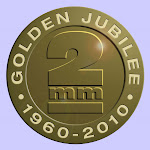One of the most offputting aspects for me was the bewildering array of command stations, boosters and handsets which, when connected together either in one box or several, consitute a “controller” in the traditional sense of the word. The trouble is, the more you talk to a DCC enthusiast about the options, the more capability you're convinced you need, and the cost of getting started seems to rise.
After seeing a demo at an exhibition, I realised that programming the chip can be made much more straightforward if done via a computer (assuming you have one, but cheap laptops are nearly as cheap as expensive DCC systems now!), a little box of magic called SPROG, and some free software, DecoderPro. This gives a nice Windows interface to the decoder’s settings. Of course, you still need to understand what it is your’re setting, but at least the job of setting it is straightforward. Even better than that, a SPROG is much less expensive to buy than standalone “DCC Programmers” resembling TV mutant remote controls, or the command stations with similarly frightening interfaces and capabilities.
So having decided I did not need a fancy control system to do the programming, and I only want to drive one of a very few locos at once, all I really wanted was a box with a speed knob on it (and not much else) that would behave in the traditional manner. I was pleasantly surprised therefore to find that there are some entry-level systems which can be had for a bargain price and do everything I want. The beauty of the DCC system is that the command signals which go onto the track must conform to the NMRA standard. This means that whatever control system you buy, its output (so far as instructing particular trains to move in particular directions at particular speeds is concerned) should be the same… so there is no real “quality” issue here. Remember that it is the decoder chip that is really the “controller” driving the locomotive’s motor, and all decoders understand the same NMRA language. inertia, feedback, load compensation, acceleration and braking characteristics, etc. are all programmed into the chip. It is therefore worth spending a bit more money on a decent decoder if you want these features. It is effectively giving your loco it’s own on-board pentroller.
My message really is this: DCC is not just for large club layouts. Furthermore, if you want to dip a toe into the murky waters of DCC, you can do so for not much more than £100: A SPROG (£50), an E-Z Command (£35) and a decent small decoder like the Lenz Silver Mini (£25) are all you need to experience the full richness of improved control. Once you’ve seen the difference “chipping” a loco can make, you’ll be hooked. Even if you’re then seduced by the sales literature, and decide you want an “american basement” style wurlitzer of a layout in ready-to-run N gauge, only the E-Z command unit will have to attempt to recoup its cost on e-Bay.

.jpg)
1 comment:
Nick: Thanks for the easy to read / understand description of DCC. I am sure it will inspire some to follow your lead, maybe even me one day.
Post a Comment